How To Digitize Vinyl Records: A Guide For Your Custom Collection
Many record collectors are exploring ways to digitize their beloved vinyl collections. Digitizing vinyl records offers numerous benefits, from preserving rare and fragile albums to enjoying your favorite music on the go.
In this inclusivecomprehensive guide, we'll lookdelve into the essentials of digitizing vinyl records., This includesing the tools and software you'll need, step-by-step instructions for conversion, tips for enhancing sound quality, and creative ways to enjoy your digital collection.
The Basics of Digitizing Vinyl Records
Why Digitize? The Benefits of a Digital Vinyl Collection
Digitizing vinyl records opens up a world of possibilities for music lovers. Not only does it preserve your cherished albums for posterity, but it also allows you to enjoy your favorite tracks anywhere, anytime. Whether you're looking to create custom playlists, share music with friends, or simply protect your vinyl from wear and tear, digitization offers unparalleled convenience and flexibility.
Essential Tools and Software for Vinyl Digitization
Must-Have Equipment for Converting Vinyl to Digital
To digitize your vinyl collection, you'll need a few key tools to get started., including You’ll need a turntable with a USB output, a computer with recording software, and audio cables to connect the two. Additionally, a good quality preamplifier may be necessary to ensure optimal sound quality during the conversion process.
Choosing the Right Software for Vinyl Record Digitization
When it comes to software for vinyl record digitization, there are numerous options available., This can rangeing from free programs to professional-grade audio editing suites. The right choice will depend on your specific needs and preferences, but popular options include Audacity, Adobe Audition, and VinylStudio.
DetailedComprehensive Guide to Converting Vinyl Records
Preparing Your Turntable for Digital Conversion
Before you begin digitizing your vinyl records, it's essential to ensure that your turntable is in good working condition. This includes cleaning the stylus, checking the tracking force, and ensuring that the belt or direct drive mechanism is functioning correctly.
Bridging the Gap: Connecting Turntables to Computers
Once your turntable is ready, the next step is to connect it to your computer. This typically involves using audio cables to connect the turntable's output to the computer's input, either via USB or an audio interface.
Capturing the Groove: Recording Vinyl Tracks Digitally
With your hardware setup complete, it's time to start recording your vinyl tracks digitally. This process involves playing each record on your turntable while simultaneously capturing the audio using recording software on your computer.
Enhancing the Quality of Your Digital Records
Ensuring High Fidelity: Tips to Preserve Sound Quality
To preserve the sound quality of your vinyl records during digitization, it's essential to use high-quality equipment and follow best practices for recording and editing audio. This includes avoiding excessive noise reduction and ensuring proper levels and equalization settings.
Organizing Your Music: Best Practices for Digitized Collections
As you digitize your vinyl collection, it's crucial to organize your digital files effectively. This may involve tagging tracks with metadata such as artist, album, and genre, creating playlists, and backing up your files to prevent loss.
Advancing Your Digital Vinyl Experience
Fine-Tuning Your Sound: Editing Digitized Vinyl Tracks
Once you've digitized your vinyl records, you may want to further enhance the sound quality or make adjustments to individual tracks. This can be done using audio editing software., This software which allows you to remove clicks and pops, adjust volume levels, and apply effects such as equalization or compression.
Designing Custom Covers for Your Digital Vinyl Records
To complete the digital transformation of your vinyl collection, consider creating custom album artwork for your digitized tracks. This can add a personal touch to your digital library and make it easier to navigate and enjoy your favorite albums.
Maintenance and Backup Strategies Post-Digitization
Caring for Your Vinyl: Tips Post-Digitization
Even after digitizing your vinyl collection, it's essential to continue caring for your physical records to ensure their longevity. This includes storing them properly, cleaning them regularly, and handling them with care to prevent damage.
Safeguarding Your Music: Backing Up Digital Vinyl Collections
In addition to caring for your physical records, it's crucial to back up your digital vinyl collection to prevent loss in the event of computer failure or data corruption. This can be done by storing copies of your files on external hard drives, cloud storage services, or physical media such as DVDs or flash drives.
Creative Endeavors with Your New Digital Collection
Personalized Playlists: Crafting Mixtapes from Digital Tracks
With your vinyl collection digitized, you have the freedom to create custom playlists and mixtapes featuring your favorite tracks. Whether you're curating a mood-setting playlist for a dinner party or compiling a workout soundtrack, the possibilities are endless.
Sharing the Love: Displaying Your Vinyl Collection in the Digital Age
In the digital age, sSharing your vinyl collection with friends and fellow music enthusiasts has never been easier. Whether through social media platforms, online forums, or digital streaming services, you can showcase your favorite albums and discover new music with ease.
Most Frequent Questions
People Also Ask
How do I convert my vinyl records to digital?
To convert vinyl records to digital, you'll need a turntable with a USB output, a computer with recording software, and audio cables to connect the two. Simply play each record on the turntable while recording the audio on your computer.
What is the best format to digitize vinyl records?
The best format for digitizing vinyl records is typically WAV or FLAC., as t These formats offer lossless audio compression and preserve the highest possible sound quality. However, MP3 or AAC formats may be more convenient for portable playback.
Is it legal to digitize vinyl records?
In most cases, it is legal to digitize vinyl records for personal use. However, distributing or sharing digitized copies of copyrighted material without permission from the copyright holder may infringe on their rights.
What is the app for your vinyl collection?
There are several apps available for cataloging and organizing vinyl collections, including Discogs, CLZ Music, and VinylLove. These apps allow you to create digital catalogs of your vinyl records, track your collection, and discover new music.




